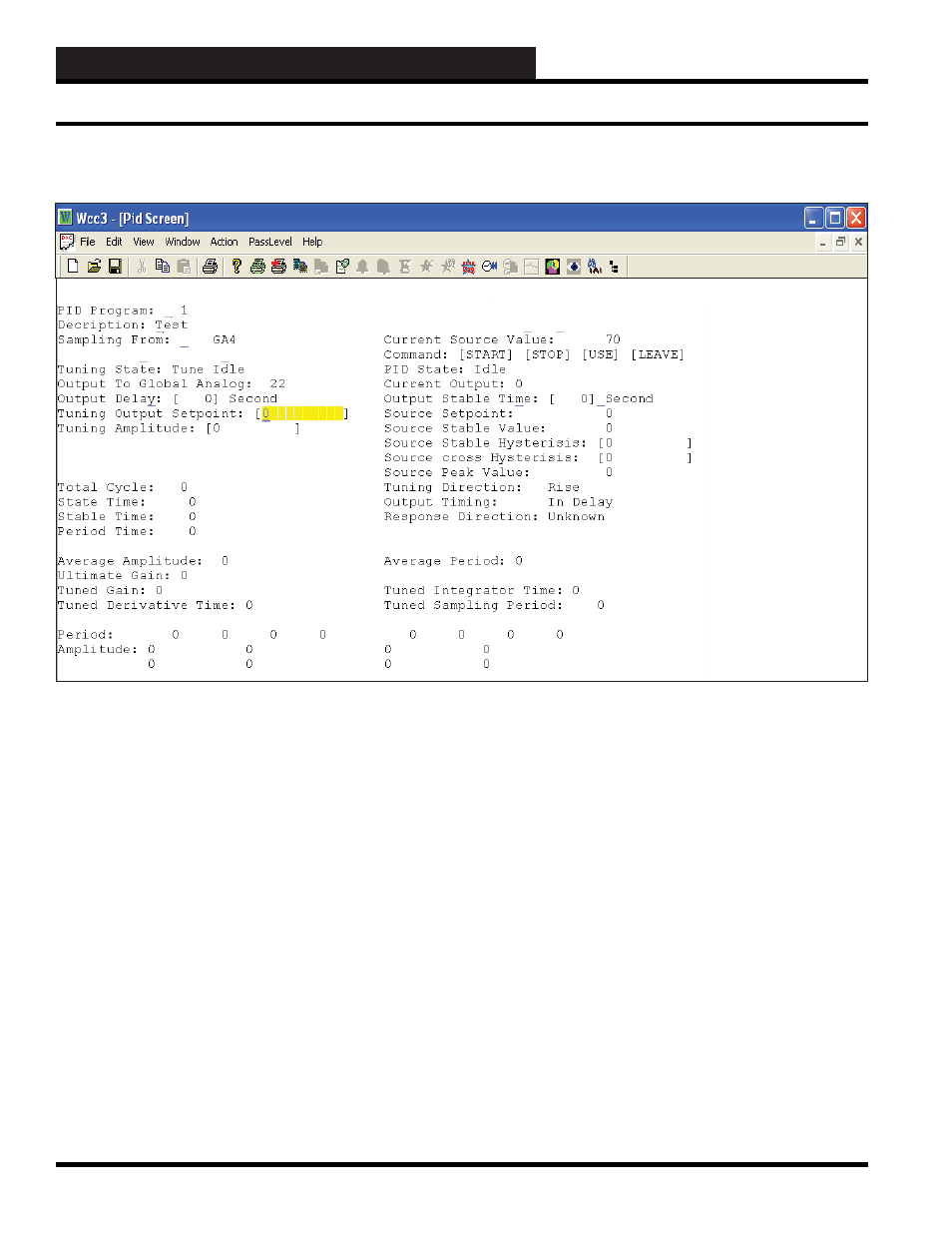Wcc3.exe screen descriptions, Tuning pid programs screen, Pid tuning screen – WattMaster WM-WCC3-TGD-01B User Manual
Page 232

WCC3.EXE SCREEN DESCRIPTIONS
WCC III Technical Guide
3-118
TUNING PID PROGRAMS SCREEN
The purpose of PID tuning is to fi nd out the intrinsic characteristics
of the system—the Ultimate Gain and System Period—in order to
set the three PID parameters—Proportional Gain, Integrator Time,
and Derivative Time.
The tuning method used by this PID program is called Relay
Tuning.
Before the tuning can be started, the tuner must have some basic
knowledge of the system so that the tuning process will not throw
the system into an unstable state. The tuner must also know the
safety range of the output value and the estimated delay time of
system that can be obtained by observation of a simple experiment.
During the tuning, the system has to be kept stable without other
dynamic change. The tuner should know the physical output range
of the system, otherwise the tuning would have no meaning.
Output Delay:
This tells the PID program how much time is needed for the
sampling value to change after a change is made to the output.
Output Stable Time:
This tells the PID program how much time is needed for the
sampling value to become stable without a change being made to
the output.
Tuning Output Setpoint:
This tells the PID program what is the safe output value without
producing an uncomfortable result. This parameter can be set as
the middle of the safety range of the output value.
Source Setpoint:
This shows the sampling source value for the output value set to be
<Tuning Output Setpoint>.
Tuning Amplitude:
This tells the PID program how much change should be made to
the output value. This parameter can be set as fi ve to ten percent of
the safety range of the output value.
PID Tuning Screen